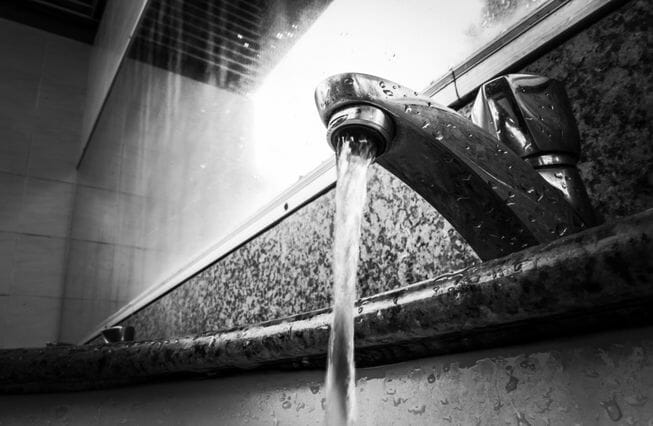

We take our tap water for granted until we’re told we can’t drink it. (Photo: Latte Art/Shutterstock)
In the wake of hurricanes and resulting power outages, many times people are told their tap water is non-drinkable. Water providers often issue a “boil-water advisory” because a treatment facility was affected during a storm. Residents are typically told that water is safe for bathing and laundering clothes.
But even though the water that comes out of the faucet looks the same as it always does, something obviously happened to make it no longer potable, or safe to drink.
So what exactly occurred? And what does the water treatment facility do to the water in the tap in first place?
Most municipal water treatment plants work by taking surface water, like water that comes from streams or lakes, and putting it through the treatment ringer, with processes like coagulation, filtration, sedimentation and disinfection. All of these processes help to eliminate contaminants in the water, like shigella, E. coli and cryptosporidium.
If a water treatment facility is flooded, as it could be during a hurricane , it is possible that the entire treatment facility’s integrity could be compromised, since the system can […]
Full article: How is tap water treated, and what causes a boil-water advisory?
Understanding chemical byproducts formed during water treatment
Water treatment for cement plant wastewater
Salem water sees decrease in toxins, Wilsonville sees increase
How to strip 99 per cent of BPA from water in 30 minutes
How is tap water treated? What causes a boil-water advisory?
Clean water is essential for life, yet millions of Americans unknowingly consume contaminants through their…
Human brains contain higher concentrations of microplastics than other organs, according to a new study, and the…
From the Office of the Governor: In anticipation of a multi-day, significant atmospheric river in Northern California,…
From Governor Newsom: Scientists, water managers, state leaders, and experts throughout the state are calling…
Photo: A harmful algal bloom in Milford Lake, Kansas, made the water appear bright green.…
An expanded plastic foam coffee cup is at a donut shop in Monterey Park, California.…